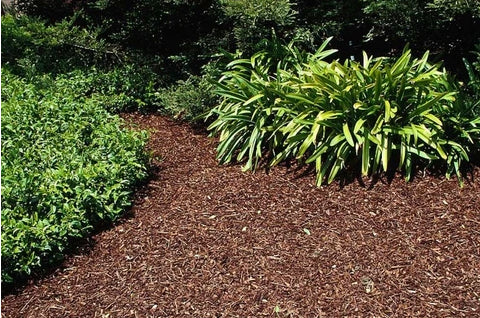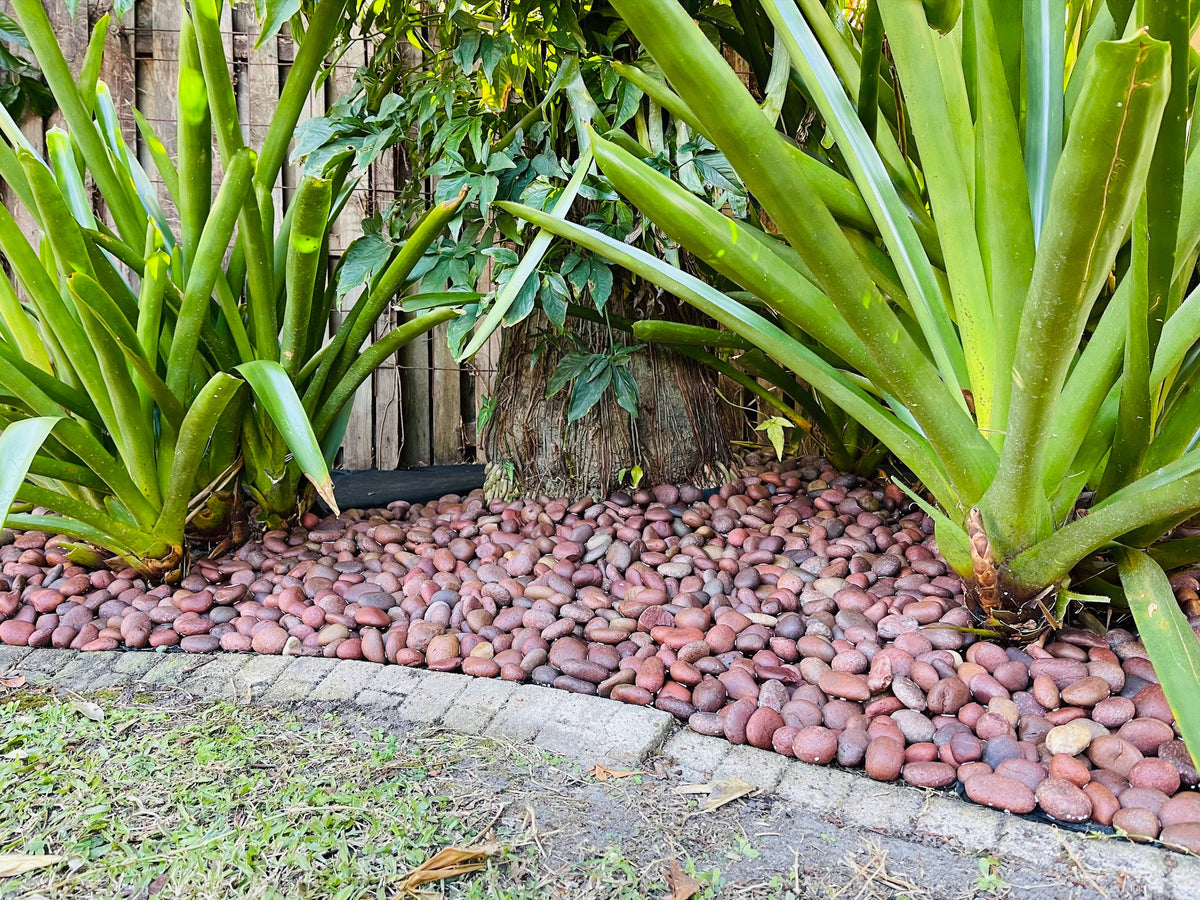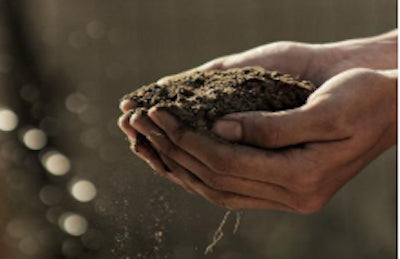Your Cart is Empty
FREEPOTTING MIX ON ORDERS OVER $200 |Applied at checkout
18 Kerryl Street, Kunda Park
FREEPOTTING MIX ON ORDERS OVER $200 |Applied at checkout
18 Kerryl Street, Kunda Park


Have you noticed how expensive food has become? If you do the grocery shopping for your household, you know that this is one of the highest costs related to your home and family. And getting truly fresh, organic, seasonal fruit and veggies is even more so.
The good news is, you can grow certain foods yourself. And, you can grow them from scraps that you would normally throw away. So in the spirit of "waste not, want not" here are 23 common fruit and veggies you can grow at home from scraps.
1. Lettuce
Lettuce, Bok Choy and cabbage are relatively easy to grow from scraps. Instead of throwing out those leftover leaves, simply place them in a bowl with just a bit of water in the bottom. Keep the bowl somewhere that gets good sunlight and mist the leaves with water a couple of times each week. After 3 or 4 days, you will notice roots beginning to appear along with new leaves. When this happens you can transplant your lettuce or cabbage in soil.
2. Celery
Celery is one of the easiest foods to grow from leftover scraps. Just cut off the bottom or base of your celery and lay it in a bowl with just a bit of warm water in the bottom. Keep the bowl in direct sunlight as long as possible each day and after about a week, you will begin to see the leaves thickening and growing along the base. When this happens, you can transplant your celery in soil and wait for it to grow to full length.
3. Lemongrass
If you love using lemongrass but have a difficult time finding it, simply regrow your own. Lemongrass will grow just like regular grass. You just place the root that is leftover in a glass bowl or jar with enough water to cover it and leave it in the sunlight. After about a week, you will notice new growth and when this happens you can transplant your lemongrass in a pot or in your herb garden.
4. Bean Sprouts
If you love cooking with bean sprouts you can grow them yourself as well. You just need to soak a tablespoon or so of the beans that you want to grow in a jar with shallow water. Leave this overnight and in the morning, drain the water off and put the beans back in the container. Cover the container with a towel overnight and rinse them the next morning. Keep doing this until you notice the sprouts begin to appear and then until they reach the size that you want. This works well with mung beans and wheat berries.
5. Avocado
Avocado seeds can be used to grow a steady supply of this super food. You just have to wash the seed and use toothpicks to suspend it over water in a bowl or jar. The water should come up enough to cover the bottom inch of the seed. Keep the container in a warm place but not in direct sunlight and remember to check the water every day and add more as needed. It can take up to six weeks for the stem and roots to appear and once the stem reaches about 15cm you will need to cut it down to 7cm. When leaves begin appearing, you can plant the seed in soil, remembering to leave about half of it above ground.
6. Potatoes
Virtually everyone knows that potatoes can be grown from potato peelings. You need peelings that have eyes on them. Cut those peelings into two inch pieces, ensuring that there are at least two or three eyes on each piece. Allow them to dry out overnight and then simply plant them about 16cm deep in your soil. Make sure that the eyes are facing up when planting. It will take a few weeks before you see the potato plant begin to grow.
7. Sweet Potatoes
Sweet potatoes can be grown much like regular potatoes. You just have to cut the sweet potato in half and suspend it using toothpicks above a container of shallow water. Roots will begin to appear in just a few days and sprouts will be seen on top of the potato around that same time. Once those sprouts reach about 15cm or so in length, just twist them off and place them in a container of water. When the roots from this container reach a couple of cms in length, you can plant them in soil.
8. Ginger
Ginger root is very easy to grow and once you get started, you can keep your supply of ginger full. You just need to plant a spare piece of your ginger root in potting soil, making sure that the buds are facing up. You will notice new shoots and new roots in about a week or so and once this happens you can pull it up and use it again. Remember to save a piece of the rhizome so that you can replant it and grow more for the next time you need it.
9. Pineapple
You can grow your own pineapple even if you don’t live in the tropics. You just cut the top off and insert a few toothpicks to hold it above a container filled with water. Keep the container in direct sunlight. If it is warm outside, sit it on the porch or deck during the day and bring it in at night. Remember to change the water every other day or so and keep the container filled so that it reaches just about the base. You will notice roots in about a week or so and once they are formed you can transplant into potting soil. If you live in a cooler area, it is best to grow your pineapple indoors.
10. Garlic
Garlic is really easy to grow and can be done from just one clove. When you buy garlic, you get several cloves so just pull one off and plant it with the roots facing down in potting soil. Garlic likes plenty of direct sunlight so in warmer weather, keep it outdoors in the sun during the day. Once you notice that new shoots have established, cut the shoots back and your plant will produce a bulb. You can take part of this new bulb and plant again.
11. Onions
Onions are very easy to grow indoors or out. You just have to cut the root of the onion off and make sure that you leave about a half an inch of onion when you do. Cover lightly with potting soil and keep in a sunny area. For green onions, simply put the white base with the roots intact in a container of water and place in direct sunlight. Change the water out every few days and the green will continue to grow. Just snip what you need and allow it to grow as long as you like.
12. Pumpkins
Just spread the seeds out in a sunny area outdoors and cover with soil. You can also plant an entire pumpkin.
13. Mushrooms
You can grow mushrooms from cuttings, although they are a bit more difficult than many other vegetables. You will need a warm area with a lot of humidity and soil that is rich in nutrients. It is much better to grow your mushrooms in a pot as opposed to in the ground because you have a better shot at controlling the temperature and the humidity. You just have to cut away the head of the mushroom and plant the stalk or stem in the soil. Leave the very top exposed and this base will begin to grow a new head.
14. Capsicum
You can grow a number of capsicum and chillis from the seeds that are leftover. Just collect the seeds and plant them in potting soil and keep in direct sunlight unless it is warm outside and then you can just plant them in your garden area. Capsicum grow relatively fast and don’t require a lot of care. Once you get a new crop, just save some of the seeds for replanting again.
15. Fennel
Growing fennel requires that you keep the roots intact. You need a couple of cm of the base of the fennel to get it to regrow. Just place this base in a container with about a cup of water and leave it in direct sunlight. The windowsill is the perfect place to grow fennel. When the roots grow strong and you notice new green shoots coming up from the centre of the base, you can transplant into soil.
16. Tomatoes
Tomatoes can be grown just by saving those seeds that you probably throw out anyway. You just have to rinse the seeds and allow them to dry. Plant in a good, rich potting soil until you notice growth coming in. Allow the seeds to get a few cm high before transplanting them outdoors. During cold weather you can grow your tomatoes indoors. Just remember to keep them in an area that gets plenty of sunlight and water a few times each week.
17. Basil
Basil is relatively easy to regrow. You just have to have a stem about 10 cm high. Place this stem in a glass of water with the leaves well above the water line. Leave the glass sitting in a bright area but not in direct sunlight. Roots should begin to form in a few days and when those roots reach about 5cm long, you can transplant them in soil.
18. Coriander
Coriander can be grown from scraps as well. Just place the bottom of the stem in a glass of water and leave in a bright area, near a windowsill perhaps. When the roots grow around 5cm long, you can transplant the Coriander into a pot and you will notice new sprigs in just a few weeks.
19. Turnips
Root plants, turnips grow well from clippings or leftover scraps. You just need to salvage the tops of the turnip and place in a container of water. You should notice new green tops growing in just a few days after you begin. Just allow the root to continue growing until it’s ready to be transplanted in the ground. This works with many root vegetables such as beets, turnips and even parsnips.
20. Cherries
You can actually grow your own cherry tree from the pit of the cherry, although it does take some time to grow an entire tree. You will need to keep the pit in cold storage for a few weeks so that they will germinate. To do this, simply clean the pit, pack it in nutrient rich soil and store it in a lidded container in your refrigerator. Leave for about twelve weeks and then transplant outdoors.
21. Apples
You can plant seeds from those delicious apples and grow your own apple trees. These are a little difficult but they will grow although you should note that you can plant several of the seeds from a single apple and end up with different types of apple trees. Just allow the seeds to dry out and then plant them. Note that you will need at least two apple trees in order for them to grow well so save more than one seed the next time you enjoy an apple.
22. Peaches
Peaches, nectarines and plums can all be grown from their seeds. Note that it does take a couple of years before you will be able to get any fruit from trees that you grow from seed but it will definitely be worth it if you begin now. You just have to dry the seeds out very well to prepare them for planting and plant them in a nutrient rich soil and in an area that gets plenty of sunlight.
23. Lemons
Lemon trees can be grown from seeds and if you live in an area that gets really cold winters, you can simply grow dwarf trees indoors. Meyer lemons tend to have smaller plants so choose these if you want an indoor lemon tree. You will begin to get lemons from your tree in just a couple of years so remember that you won’t actually get lemons the same year that you plant them. Just be sure to clean and dry your seeds before planting and choose a soil that is rich in nutrients for the best results.
As you can see, you can potentially save loads of money at the checkout by growing your own. But remember, you will get your best results by using a premium, nutrient dense soil mix to plant your new plants out.
We highly recommend our Coastal Premium Blend, and you can calculate how much you need for your veggie garden project here.

Mulching is one of the most important Winter garden jobs because it insulates the soil, retains moisture and suppresses weed growth.

Stunning Kashmiri Polished Red Pebbles have deep, rich and vibrant colour tones and are available to order in 20kg bags.

We are excited to announce that our soils are now certified AS 4419. AS 4419 is an Australian Standard that provides guidelines for producing and using soils in landscaping and garden applications.